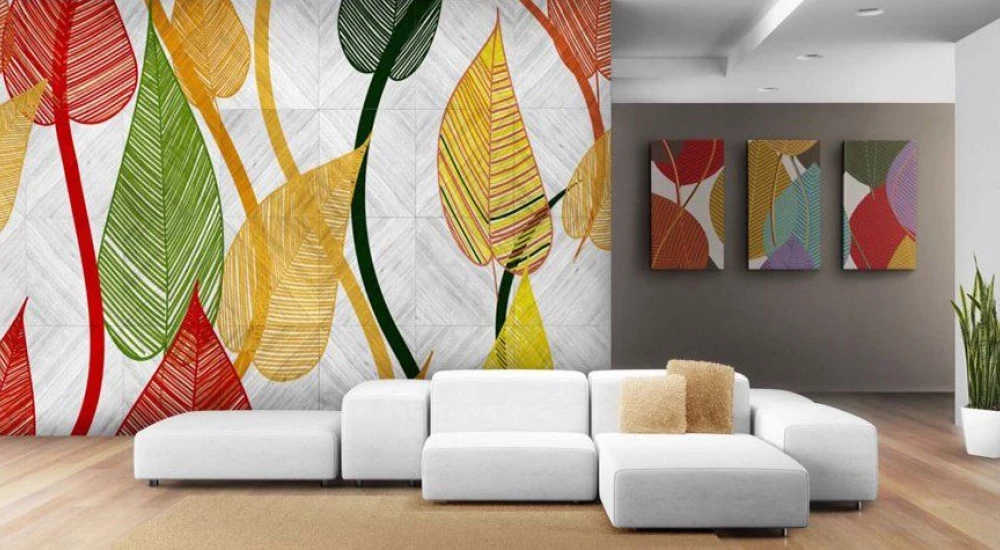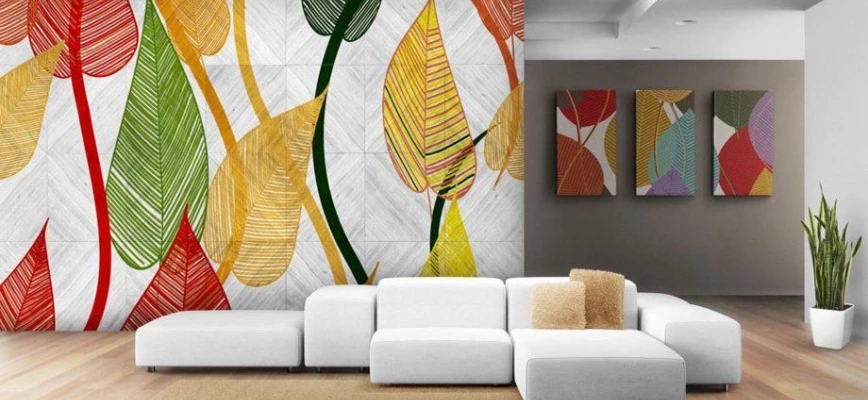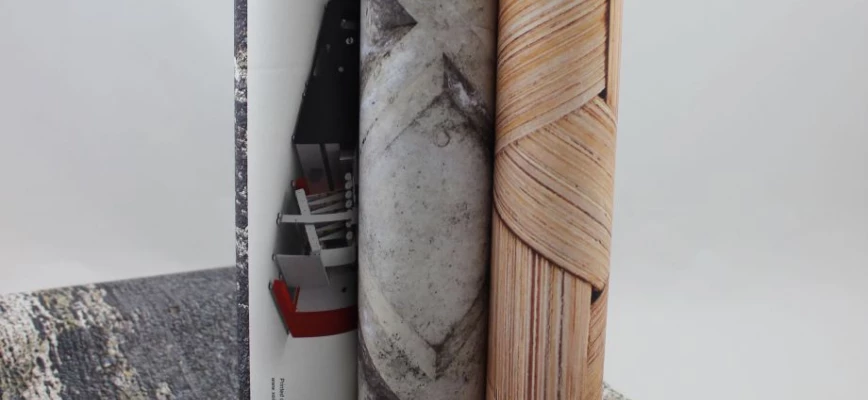03/03/2020
by Melissa Donovan, Industrial Print Magazine
Technavio report
The findings from the report support digital emerging as a major wallpaper printing technology. Similar to digital printing in other industrial segments, manufacturers, interior designers, architects, and consumers benefit from the technology’s many advantages, including cost-effective short runs at high-quality resolution, the capability for one offs and customization, and the elimination of costly inventory.
Various types of digital printers serve this space. Dedicated or specialized devices—both narrow and wide format—are ideal for those only printing with wallpaper or wallcovering output in mind. Wide format roll devices are also available, but offer versatility in terms of printing more than just a wallpaper or wallcovering.
Can Digital Go Larger?
Wallpaper at a commercial level is commonly produced in very large runs. Most vendors agree that analog technologies are still best suited for long runs of the same design based on productivity and consolidates costs. However, medium-size runs for things like limited collections are great for digital printing, in addition to shorter runs and one offs.
“Despite obvious advantages such as no setup time, the related cost of cylinders or screens, less waste, reduces maintenance, and smaller footprint, the challenges for digital production as a replacement to conventional production are primarily found in productivity, running cost, and special effects. Without customization, limited collections, micro runs, or unique pieces, it remains challenging for digital to compete with conventional,” admits Van Gaever.
Georgiou adds that large runs benefit from flexographic and offset technologies, and this is purely based on the cost efficiencies of massive, long-run homogeneous printing.
Traditional wallpaper printing has a major flaw though, which according to Dr. Aleksey Etin, CTO, Veika, is that it freezes large amounts of money into stock. “In order to be effective, traditional wallpaper producers manufacture 1,000 to 2,000 rolls of each SKU in one go. Bearing in mind that collections are usually comprised of 30 to 50 different designs or shades, 30,000 to 100,000 rolls are produced and put into warehouses, without knowing which will sell well. The cost of digital printing is almost the same despite whether one or 100 units are printed, thus there is no need to keep a huge stock of an item. That is a huge cost advantage over traditional production methods.”
Digital has the capability to be used for larger runs depending on the printer, suggests Wittenberg, specifically pointing to HP Indigo technology for medium to large runs. “The benefit with digital is that even the long runs can be made short and to order, which reduces inventories to just in time. Carrying costs and obsolescence are greatly reduced to improve profitability.”
Wide format roll printers are somewhat limited on the other hand. “Due to roll weight limits and roll diameters, economically printing longer runs is not possible without constant supervision and roll changes. Unless a shop installed several printers, long runs are still the domain of other methods of printing,” says Rugen.
However, Etin points out that digital printing is rapidly evolving and faster, more cost-effective machines will eventually be available. She compares this to the textile printing evolution. “Just a few years ago digitally printed textiles were mostly used for short runs and custom, one-off designs, but at the moment it already comprises a significant part—seven to ten percent—of the industry, as the technology advances.”
“Digital printing versatility is a winning solution for any size print run. It represents the most cost-effective option to satsify modern printing needs—fast time to market and high customization,” adds Marco Girola, marketing and communications manager, JK Group/MS Printing Solutions.
Hardware Options
There are specialized or dedicated digital devices designed for printing wallpaper as well as roll devices that print not only wallpaper but a host of other applications. Each is useful, depending on the user and their expectations.
For the best fit, it’s important to understand the needs of the company. “If the business is focused solely on printing wallpaper, it would make sense to get the specialized, dedicated devices. The costs can be managed to the benefit of the business profits with this singular focus,” recommends Wittenberg.
“Each is useful, but a specialized device locks an end user into just one application, whereas a device that excels at wallcoverings and many other applications lets a company diversify its business operations. This not only addresses the seasonality swings that can impact business, but also introduces new applications for new market growth,” suggests Georgiou.
New applications open up new opportunities. “As the traditional wallpaper industry is stagnating, diversifying business might be crucial for the survival of some producers. They can offer more complete solutions for their clients, rather just wall décor, including finishing for furniture, fine art printing, and the like,” says Etin.
Specifically in the wide format space, roll devices are increasingly manufactured with versatility in mind. “Wide format roll-to-roll printers are perhaps the most flexible when it comes to printing short-run wallpaper since it takes much less labor to change wallpaper media and because there is a greater variety of media that can be printed. Samples can be run quickly before a project application is created for production,” adds Rugen.
“If wallpaper is only one of a number of applications, the wide format roll to roll would be a better option to gain versatility. These units are designed with quick setup and changeovers to allow for multiple applications and media to be run in a day. With the setup and changeover costs being low, profitability can come from such a strategy,” agrees Wittenberg.
Van Gaever also notes that because of the width of the printer, it allows for wide, seamless wallcoverings—an additional bonus. But, he does caution that versatility comes with a price. “The production process is slow, there will be less room for automation and standardizing in workflow, and offline finishing needs to be executed. It all depends on application focus and volume,” he admits.
Think Ink
Speeds and feeds tend to be a major focus surrounding hardware. However, the ink or toner placed in the box is equally important—this is especially true when considering an application such as wallpaper or wallcoverings and the relation to human and environmental safety.
Collectively, any ink or toner with little to no volatile organic compounds (VOCs) is preferred. This includes dry toner and eco-solvent, EP latex, liquid EP, UV, and water-based inks. The chemical makeup of these consumables is kinder to both the manufacturing facility workers subjected to the printing process, as well as the eventual recipients and inhabitants where the wallpaper or wallcovering will be installed.
“Ink types are constantly and quickly changing in consideration of the human environment. Inks that are ‘green’ or safe to the human skin are quickly becoming standard on many eco-solvent and UV LED style printers and this in turn allows these printers to be used in more places where toxicity is a concern,” admits Rugen.
According to Georgiou, greener inks present potential for new clients. “They open up opportunities in markets such as hospitals, restaurants, and corporate space customers, who are not only just looking for environmentally conscious options, but ways to use wallcoverings as a means to customize and brand their work environments.”
Girola points to water-based inks that result in high print quality, color definition, consistency, and low environmental impact when paired with the correct substrate. “This aspect plays a significant role in the customer end choice. Polyester wallpaper can be printed directly by using disperse inks, but even by pigment inks. Pigment offers an interesting solution due to the affinity to a huge number of substrates as well as for the brilliant chromaticity and excellent lightfastness,” he continues.
Considering Substrates
Digitally printed wallpaper or wallcoverings can be made up of virtually any type of substrate—and there are many options available today. These include paper, vinyl, and textile; all of which are available in different surface finishes from matte to gloss.
“Versatility is the name of the game when printing wallpaper. Paper, vinyl, self-adhesive vinyl, and textile are just some of the substrates that can be printed digitally. The breadth of media for digitally printed wallpaper and wallcoverings allows a company to meet the needs of the in-demand substrates with a variety of designs in a changing marketplace,” explains Wittenberg.
Complementing the trend of sustainability that starts with printing using eco-friendly inks, Rugen shares that many wallpaper products are made with recycled materials or use methods that make them recyclable.
One of these materials is non-woven. According to Van Gaever, the substrate of choice for digitally printing wallpaper is non-woven. “It is made of a special blend of natural and synthetic fibers, making it washable and breathable. Non-woven is fast becoming the preferred substrate for wallpaper. Many non-wovens are vinyl free, making them an environmentally friendly wallpaper option,” he says.
Influencing Wallpaper
Depending on the needs of the producer—specifically run length—there are a number of options when it comes to available digital printers. For a traditional wallpaper manufacturer looking to augment its analog technologies to address demands for capsule collections or even customization, a specialized device—narrow or wide format—is an excellent option. If the ultimate user of the printer may offer additional services beyond wallpaper or wallcoverings, a wide format roll-to-roll device should be considered. Digital printing’s position in wallpaper and wallcovering production is still considered niche, but there is much room to grow.
Xeikon Wall Decoration Suite
You can produce a wide variety of high quality wall decoration products in short runs with our Xeikon Wall Decoration Suite – and do this in a profitable way. As an all-in solution – a Suite in Xeikon lingo – we make optimal advantage of digital printing technology to help you meet the challenges in your market.
Industrial Print Magazine
The article is written by Melissa Donovan and published at Industrial Print Magazine.



